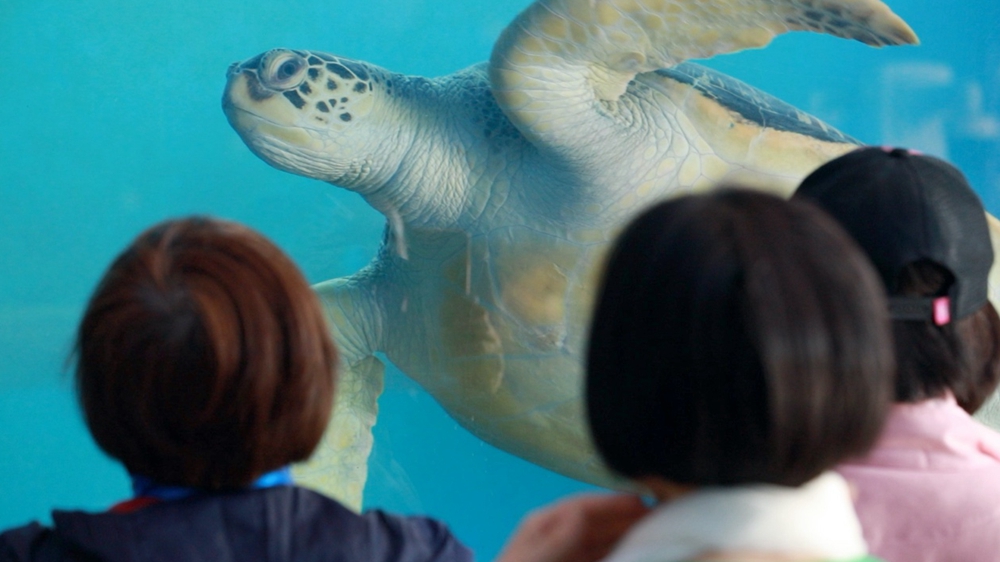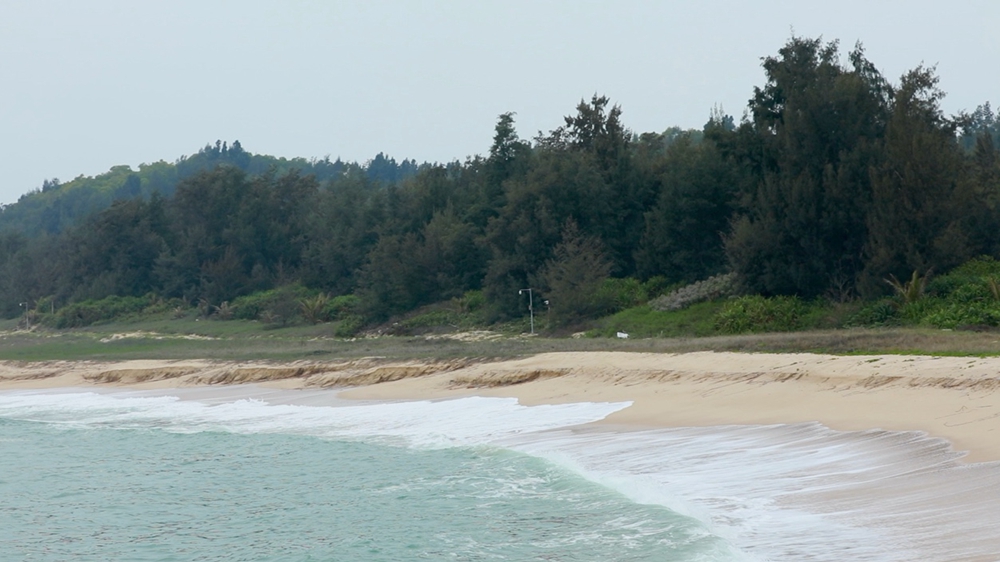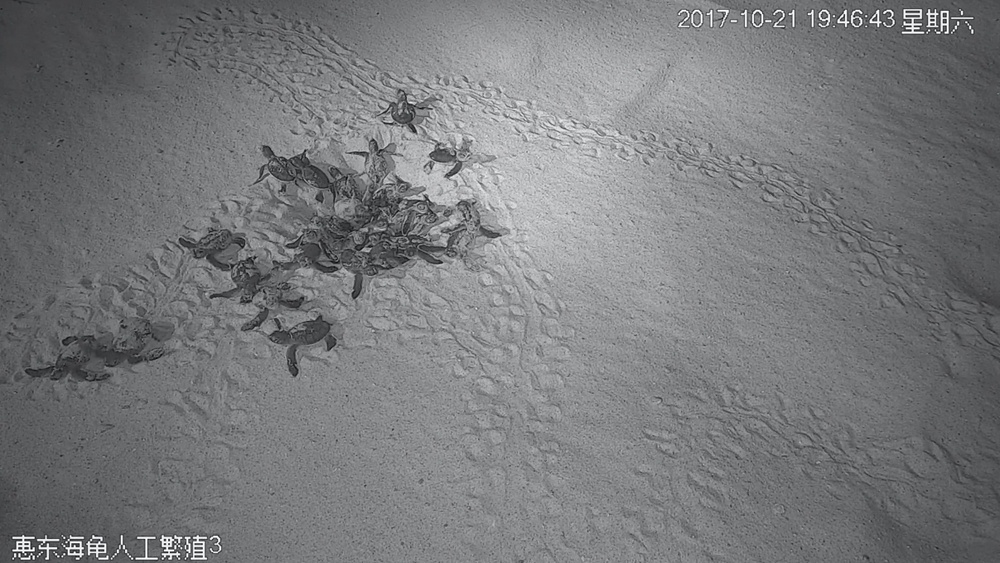
Tourists watch artificially bred sea turtles at the National Sea Turtle Nature Reserve in Huidong County, south China's Guangdong Province, March 23, 2021. /CGTN
Tourists watch artificially bred sea turtles at the National Sea Turtle Nature Reserve in Huidong County, south China's Guangdong Province, March 23, 2021. /CGTN
The green sea turtle, named for the green fat under its shell, is one of the largest of its species. It is a living fossil that has lived on Earth for over 200 million years. But now, it faces extinction. Experts say it's even more endangered than the giant panda 30 years ago.
In response, China has ramped up efforts to protect this graceful reptile. The National Sea Turtle Nature Reserve in Huidong County, south China's Guangdong Province, has successfully bred turtles to increase numbers and release them back to the wild.
Along China's coastline, Sea Turtle Bay in Huidong County is the last spawning bed for wild sea turtles, with experts noticing a decrease in numbers over recent years.
Chen Hualing, an engineer in the administration office of the National Sea Turtle Nature Reserve, has devoted himself to protecting and researching sea turtles for decades.
"Our data shows the number of sea turtles has declined since 1985," Cheng revealed.

The beach where wild sea turtles lay eggs in Sea Turtle Bay in Huidong County, south China's Guangdong Province, March 23, 2012. /CGTN
The beach where wild sea turtles lay eggs in Sea Turtle Bay in Huidong County, south China's Guangdong Province, March 23, 2012. /CGTN
"Firstly, it's because the turtles' migration route is threatened by human activity. The second cause is global marine pollution. Sea turtles often mistake garbage for food, which kills them," said Chen.
In the wild, the green sea turtle only begins to breed at 20 years old. Once it does, it will only spawn every three to five years.
A female sea turtle often lays more than 100 eggs during a spawning season. But experts say only one out of these hundred could survive to adulthood.
And females are especially vulnerable when they go ashore to lay eggs. Any human presence or activity on the beach will scare them away.
The wild sea turtles lay their eggs on a particular line of beach in Sea Turtle Bay. Local authorities began protecting the area in 2013, meaning tourists have since been banned from entry.

Surveillance footage shows sea turtle babies hatching out at the National Sea Turtle Nature Reserve in Huidong County, south China's Guangdong Province, October 21, 2017. /Chen Hualin
Surveillance footage shows sea turtle babies hatching out at the National Sea Turtle Nature Reserve in Huidong County, south China's Guangdong Province, October 21, 2017. /Chen Hualin
In an effort to protect the species, the nature reserve has been artificially breeding sea turtles since it was built in the 1980s. Breeding wasn't successful until 2017, when some female turtles laid eggs on the reserve's artificial beach for the first time.
"We've tried to tackle the problems that affect reproduction. A core issue is water temperature control. We have to figure out how to adjust the temperature to the right level for them to reproduce," said Chen.
The nature reserve currently raises around 1,000 green sea turtles. And every year, it releases about 600 into the ocean.
Chen emphasized that the country should integrate different sources to protect the migration route of sea turtles. He also called for international cooperation to be enhanced because "marine debris is a global problem, which has caused great damage to marine life."
Last year, China adjusted its list of key protected wild animals and raised the protection level of sea turtles from level two to level one, which signifies better protection of the species in the future.

